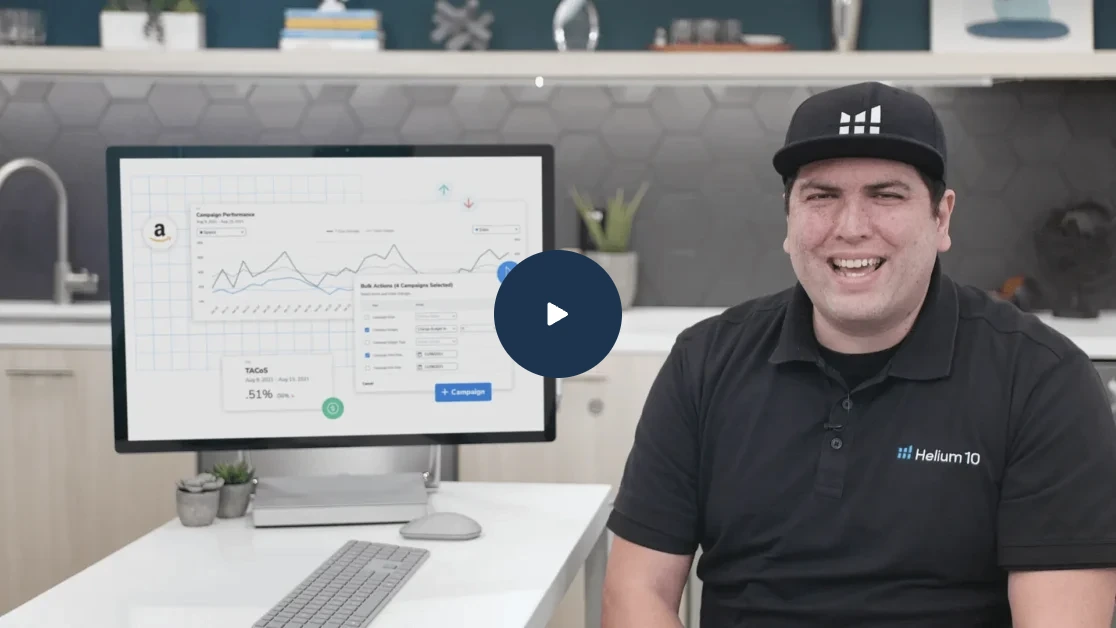Tariffs, Inventory, and Margin Pressure: Seller Tips

Table of Contents
The e-commerce landscape is in unknown territory once again.
Tariff changes are top of mind across the space, and platforms like Amazon, Shein, and Temu are reacting in very different ways.
Here’s a breakdown of what’s happening and what it could mean for sellers and consumers alike.
Amazon Cancels Vendor Orders Amid Tariff Uncertainty
Following the U.S. government’s April 2nd announcement of increased tariffs on goods from certain Asian countries, reports surfaced that Amazon quietly canceled orders from a number of vendors in China and other Asian markets.
- While no official reason was cited, the timing strongly suggests it was a response to the potential cost increases from new tariffs.
- Some Amazon sellers are also holding off on inventory orders to avoid getting caught with higher duties, especially if the tariffs are reversed soon after shipments go out.
- This move could create short-term out-of-stock scenarios for 1P (Amazon-sourced) products—potentially giving independent sellers with available inventory a strategic advantage.
What’s Happening With Shein and Temu?
Shein and Temu, which rely heavily on direct-from-China shipping under the “de minimis” rule (which allows packages under $800 to enter the U.S. without customs duties), are facing big changes.
- New rules going into effect on May 2 will apply duties as high as 90% or a flat $75 fee per package.
- A $5 product could suddenly cost $9 or more—still cheaper than Amazon in some cases, but less competitive overall.
More importantly, shipping delays and new processing requirements may impact the customer experience:
- These packages will now require customs clearance, which could mean multi-week delays.
- There’s concern that consumers may need to visit a post office or pay fees to release items—something that could deter repeat purchases.
What This Means for Sellers
With potential supply disruptions and higher costs looming for low-cost platforms, Amazon sellers with U.S.-based fulfillment or stock already in FBA may be in a stronger position:
- Price-sensitive shoppers may return to Amazon if shipping delays or unexpected fees from international sellers become common.
- Sellers who manage pricing and inventory wisely during this transition may capture additional sales from out-of-stock competitors or delayed orders.
Already Have Shipments on The Way? Here’s What to Consider
If your product is already in transit from China to the U.S., you’re not alone and you’re likely feeling the uncertainty around what these new tariffs mean for your bottom line.
Here’s what to weigh right now:
☑️ Do you have the financial bandwidth to absorb higher duties?
If the tariff hits while your inventory is mid-shipment, you might have to pay significantly more than anticipated just to clear customs. Review your current margin stack and cash flow. If your business can absorb some of the extra cost without derailing operations, that’s a short-term win. If you don’t have the funds, there are companies specifically for sellers that can provide you with a loan in the short-term.
☑️ Are you sitting on debt?
If you’ve financed this inventory, increased tariffs may put pressure on your repayment timelines. Be proactive and look into renegotiating terms with your supplier or lender, especially if your goods were ordered before the policy shift.
☑️ Is your inventory moving fast enough?
High-margin products can still bleed money if they’re moving slowly. Inventory velocity becomes even more important when added costs hit. The longer products sit, the more they chip away at your profitability.
Prioritize fast sellers. If possible, push them harder with ads, bundles, or discounts to convert inventory into cash faster.
If you’re bringing in new inventory soon, now’s the time to pressure-test your pricing strategy, renegotiate with your supplier, and get laser-focused on your product lifecycle.
Bottom Line
Tariff changes and shifting e-commerce policies are reshaping how and where consumers buy. While the full impact is still unfolding, sellers should be watching closely and potentially use the opportunity to stay in stock, competitively priced, and ready to convert frustrated cross-border shoppers.
With Helium 10’s Amazon Profits Tracker, you can access one dashboard for all your most important selling analytics and inventory data. From longer shipping times to customer sentiment, you can gain valuable insights about the repercussions of tariffs on your business.
Achieve More Results in Less Time
Accelerate the Growth of Your Business, Brand or Agency
Maximize your results and drive success faster with Helium 10’s full suite of Amazon and Walmart solutions.

